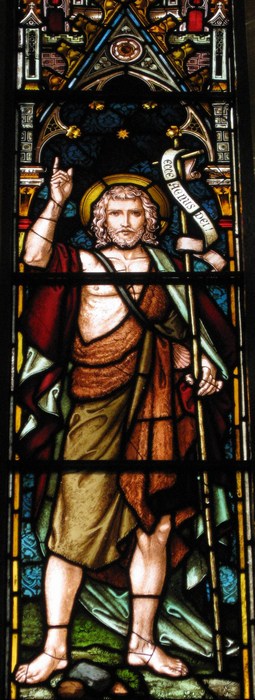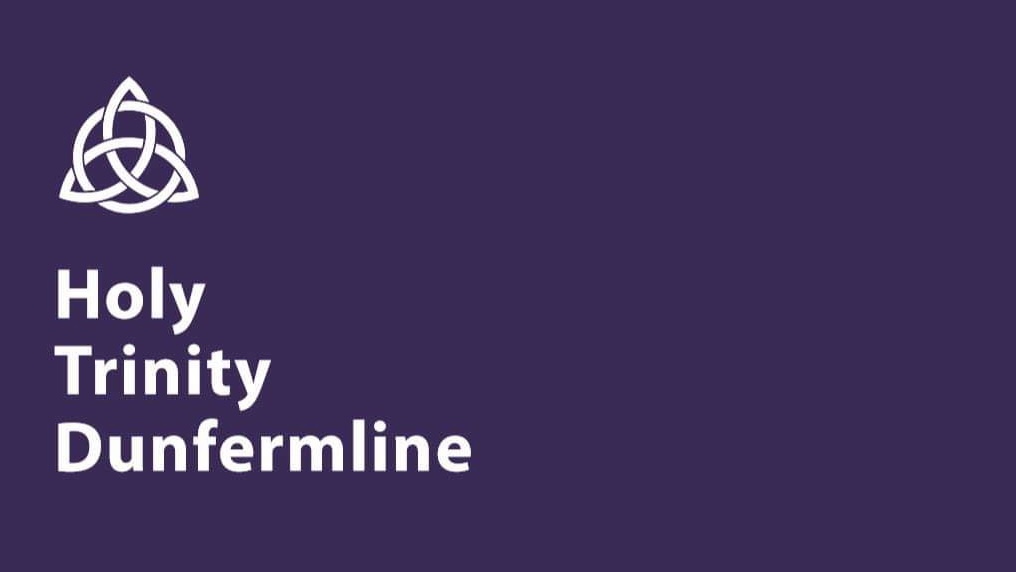St John the Baptist – 29th August
St John the Baptist is probably known to all of us as having Baptised Jesus, an event that is recorded in three of the four Gospels namely Matthew, Mark and Luke. This immediately raises the question of why Jesus needed baptising and what was the nature of the baptism. The Baptism as practiced by John should not be confused with the Christian Sacrament of Baptism but as a symbol of cleansing and preparation for the coming of the Messiah and the end of the world when all would be judged. Indeed it had been prophesied that before the end of the world Isaiah would return to usher in the Messiah, and many Jews believed that John might be a reincarnation of Isaiah. Matthew tends towards this view of John, whereas Luke and Mark depict John as being a forerunner to Jesus. If John’s baptism is merely a symbolic cleansing then Jesus’ submitting himself to it can be seen as an endorsement of the practice.
In Luke’s Gospel details of John’s birth are given when Zacharia, a priest, has a vision of the Archangel Gabriel announcing that his wife, Elizabeth, a relation of Mary, for long thought to be barren was pregnant with a son. Shortly after Gabriel also appeared to Mary and in telling her that she was now pregnant with Jesus also told her about Elizabeth. Mary hastened to visit her kinswoman. On greeting Mary, Elizabeth said to her that the foetus in her womb had stirred in her presence and had recognised the presence of that of the Lord in Mary. If this is true John and Jesus must be approximately the same age and be related – another possible explanation for Jesus to have approached John for baptism.

At about the age of 12, John was sent to an Essene Jewish group, in the desert and brought up in a strict environment of conformity with ultra Jewish habits which led him to dwell in the wilderness, dress simply in camel hair, and eat gathered food of locusts and honey. From this he started the ceremonial washing of people in preparation for the Messiah’s coming. He also preached and was something of a Billy Graham of his time. He did not build up a following by seeking disciples but baptised any Jew who sought it, some of whom stayed on with him. It was so when Our Lord came to John seeking baptism and cleansing. The meeting and the format of the washing are similar in all three gospels that cover it, namely that Jesus asked to be baptised and that John at first demurred saying that Jesus should be the one to wash and cleanse him. John eventually baptised Jesus and when he had done so the heavens opened and the Holy Spirit descended on Jesus and a voice said “Thou art My Son, My beloved; on Thee My favour rests”. This provides another enigma. With this manifestation that Jesus was something special One can but wonder why John and any followers who heard and saw it did not immediately join Our Lord’s mission.
Immediately following his baptism by John Our Lord appears to have gone to the wilderness for forty days and resisted the temptations of Satan following which He started His mission. This period following Jesus’ baptism is regarded by many as the beginning of Christianity commencing with the washing.
Shortly after this John was arrested and imprisoned by Herod Antipas, the King of Galilee, allegedly because he was preaching against Herod for having married Herodias, his half-brother’s wife, and having divorced his own first wife the daughter of King Aretas, a non-jewish king. All of this was contrary to strict Jewish Law and Josephus, an unbiased Jewish Historian, suggests that Herod feared that his non- jewish subjects and the orthodox Jews might join up to unseat him and this was the real reason for his imprisoning John and eventually killing him.
The circumstances surrounding the death of John the Baptist are to say the least bizarre. It is alleged that at a party Herod was so enchanted by the exotic dancing of Salome, Herodias’ daughter, that he offered to reward her with half his kingdom or anything she might ask. Salome asked her mother what she should do and Herodias, smarting under John’s preaching condemning her, told Salome to ask for the head of John the Baptist on a platter. Herod is alleged to have been aghast and unwilling to kill the Baptist, but felt he had to meet her request so he gave the order for John to be beheaded and his head brought to the table on a platter. When it arrived Salome had it passed immediately to Herodias. Can one really believe that Herod did not really want to kill John – hardly likely. Evidence of the circumstances of John’s death is given by Josephus.
So John the Baptist was a forerunner of Our Lord and was an antecedent to Our Lord’s mission and he died for his belief. As such the early Christians acclaimed him as a saint and is now revered as such by all Christian churches who either recognise his patronal date on the 24th June, his birthday or 29 August the date of his beheading. Many churches have him as their patron and he is also patron saint of French Canada. John is also named in the Koran and is revered by Muslims as a prophet.
The head of John the Baptist was buried and lost. In later years three separate heads were found in various places which were all claimed as being his head. The beheading of John the Baptist became a popular subject for renaissance painters. The one at the head of the article is by Caravaggio and is held in St John’s Co-Cathedral Malta and is regarded as his greatest work. As an aside after 300 years of burnt candle wax in its shrine it badly needed cleaning and was sent to Italy in the early 1950s for this to be done. The Archbishop of Malta, not wishing to trust such a valuable painting to normal carriers and asked the help of the Navy and accordingly the painting was taken to Civita Vechia in the magazine of a cruiser under guard the whole time.

